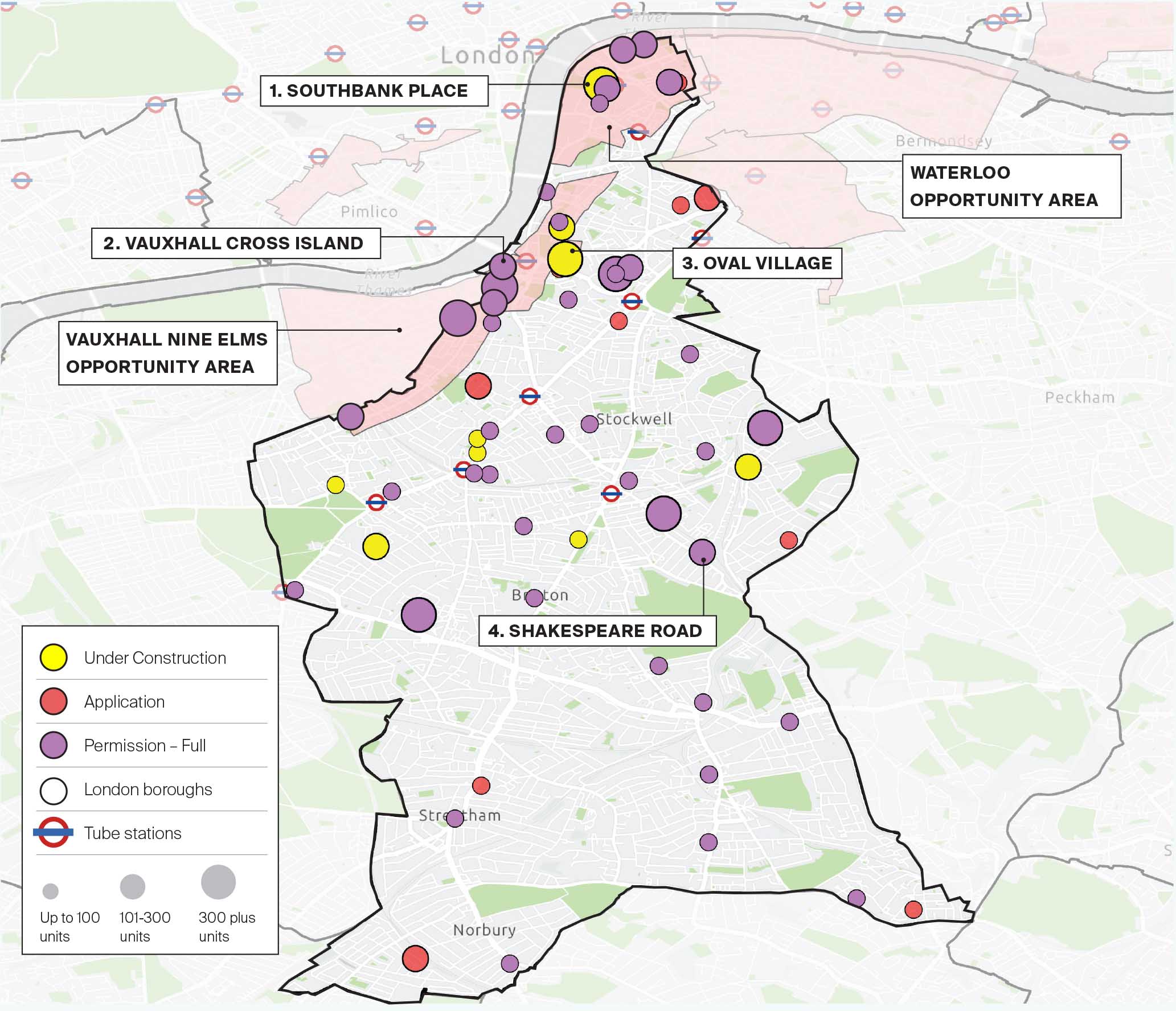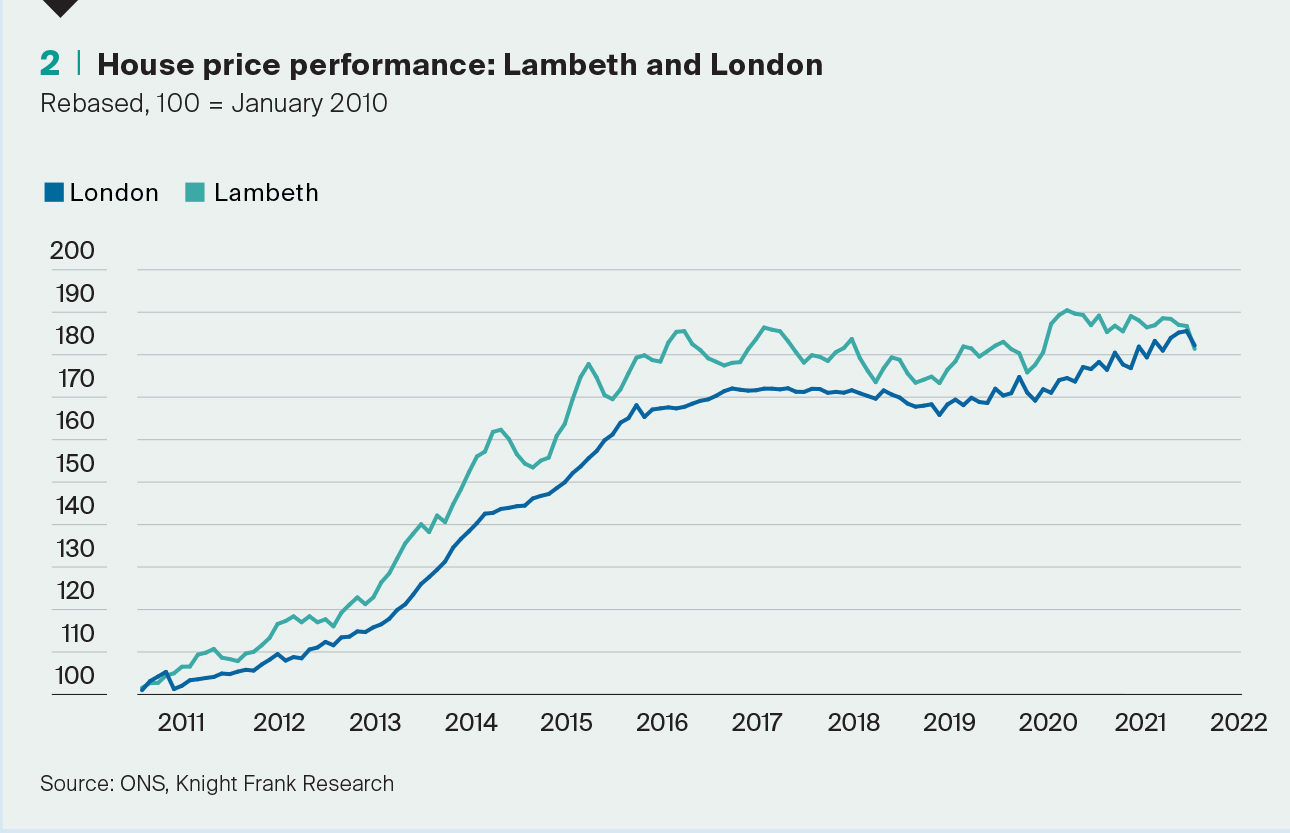Lambeth developers target new zones to meet housing demand
Residential developers across the capital are rising to the challenge of creating more dynamic and sustainable neighbourhoods with a greater mix of uses.
2 minutes to read
The pandemic has accelerated the need for genuinely mixed-use schemes which offer a broad range of amenity and blend home, work and leisure activities. But at the same time, new homes delivery was curtailed during the first period of the pandemic in 2020, when a number of construction firms closed sites due to Covid-19 restrictions.
In a new research report, we explore the rise of mixed-use development in the London borough of Lambeth, an area with two designated development opportunity areas expected to create 24,500 new jobs over the next two decades and, in turn, stimulate new homes delivery. We look at how new pockets of regeneration will help boost new homes delivery in the borough after a 20% fall in annual housing output in the 2020-21 financial year.
Overall, there are currently 158 major residential projects in the pipeline for London that include 500-plus new homes with planning permission granted, Molior data shows. This figure includes four schemes in Lambeth which will deliver a mix of office apartment, co-working, leisure and retail space.

This is supporting further development in the wider borough of Lambeth, in areas including Oval, Brixton and Clapham.
Development will be supported by population growth of 7% over the coming decade, outperforming a 6.5% increase across London as a whole, and a 23% increase in average household disposable incomes over that time.
The challenge all London boroughs face is providing better access to workspace and more localised retail districts alongside these new housing schemes.
Mixed-use spaces will have a significant role to play in responding to changing work and life trends. While typically there is always one market driving a development as its anchor, the challenge now will be to assess the best combination of anchor and supporting real estate uses.
Lambeth is currently a focus point for two London development opportunity areas: Waterloo, estimated to create 1,500 new homes and 6,000 new jobs by 2041, and Vauxhall Nine Elms Battersea, set to provide 18,500 new homes and 18,500 new jobs.

New zones emerge after challenging year
Emerging mixed-use developments elsewhere in the borough include Berkeley’s 1,300 home Oval Village in Lambeth, which also comprises 100,000 sq ft of commercial space.
New development is also taking place further south in Clapham and Brixton, including Clapham House just south of Stockwell tube station which comprises 50 new build flats on Clapham Road, as well as a 218-unit scheme in Brixton on Shakespeare Road.
These schemes will help contribute to new housing supply, following a challenging period for delivery. Overall, developers in Lambeth built 1,198 homes in 2020-21, according to official figures, down around 20% year-on-year.
The London Plan, the Mayor’s key strategic document, suggests Lambeth will require 1,335 homes respectively every year for a decade in order to keep up with demand.
Our analysis of the current development pipeline in Lambeth identifies 7,896 units with planning permission granted and 1,430 currently under construction which will be delivered over the coming years.